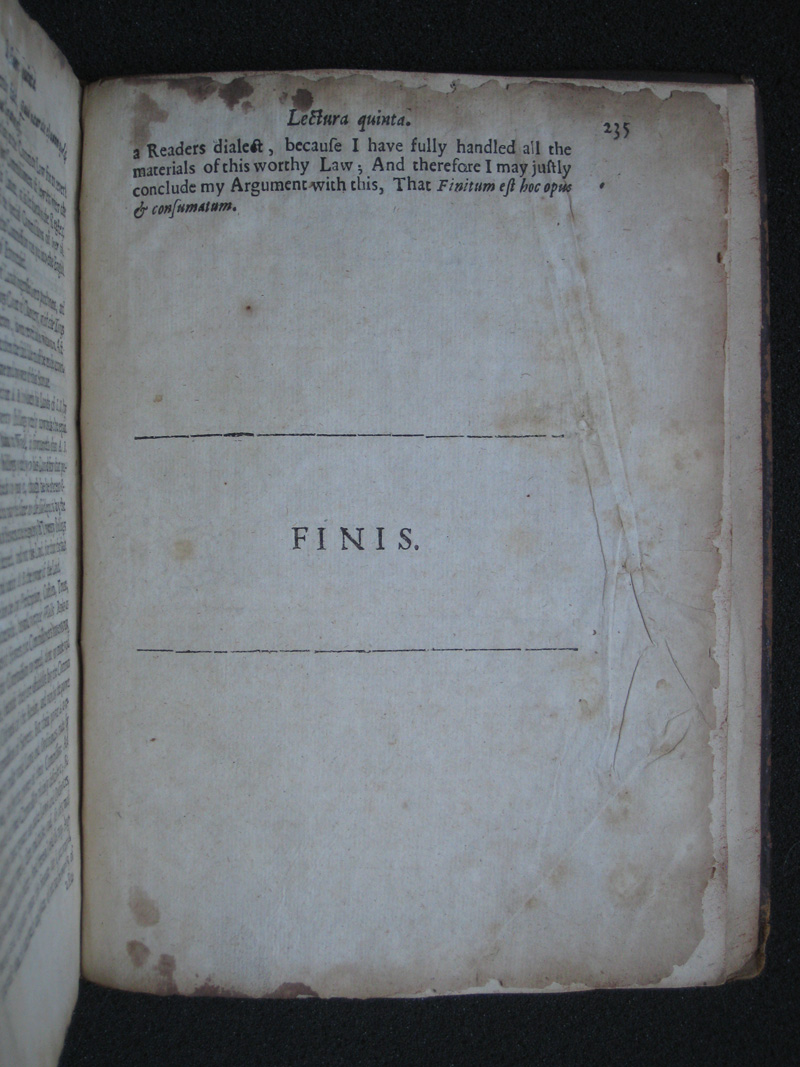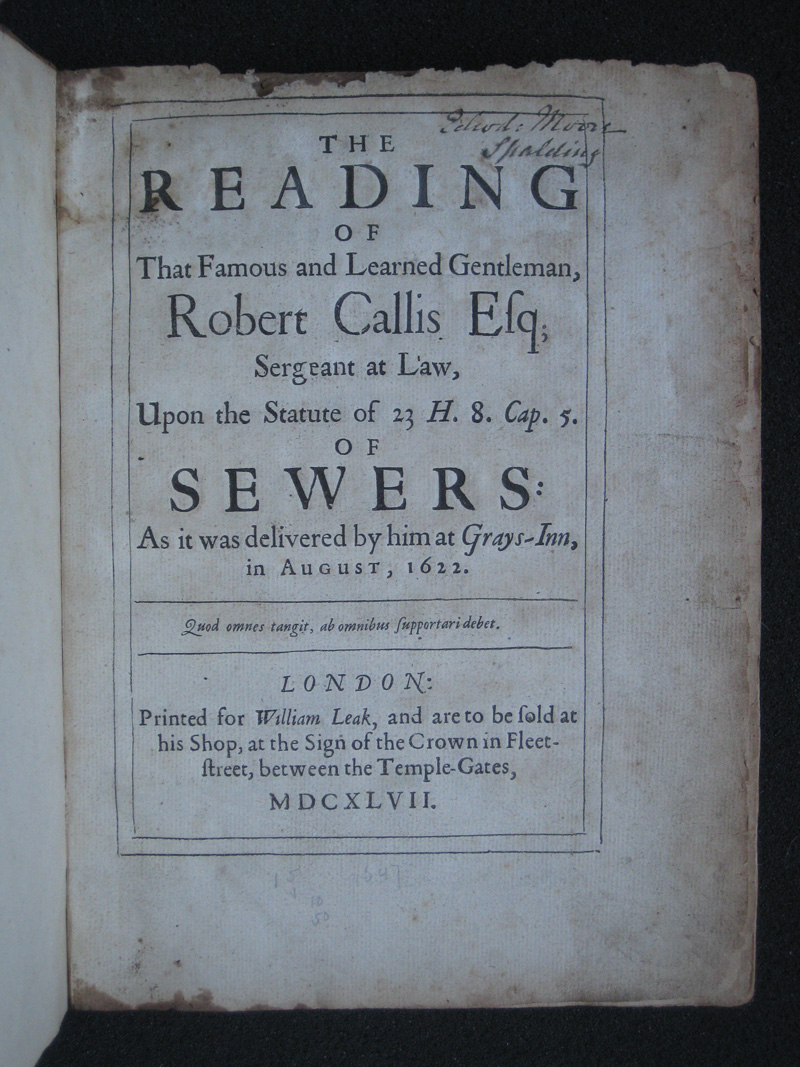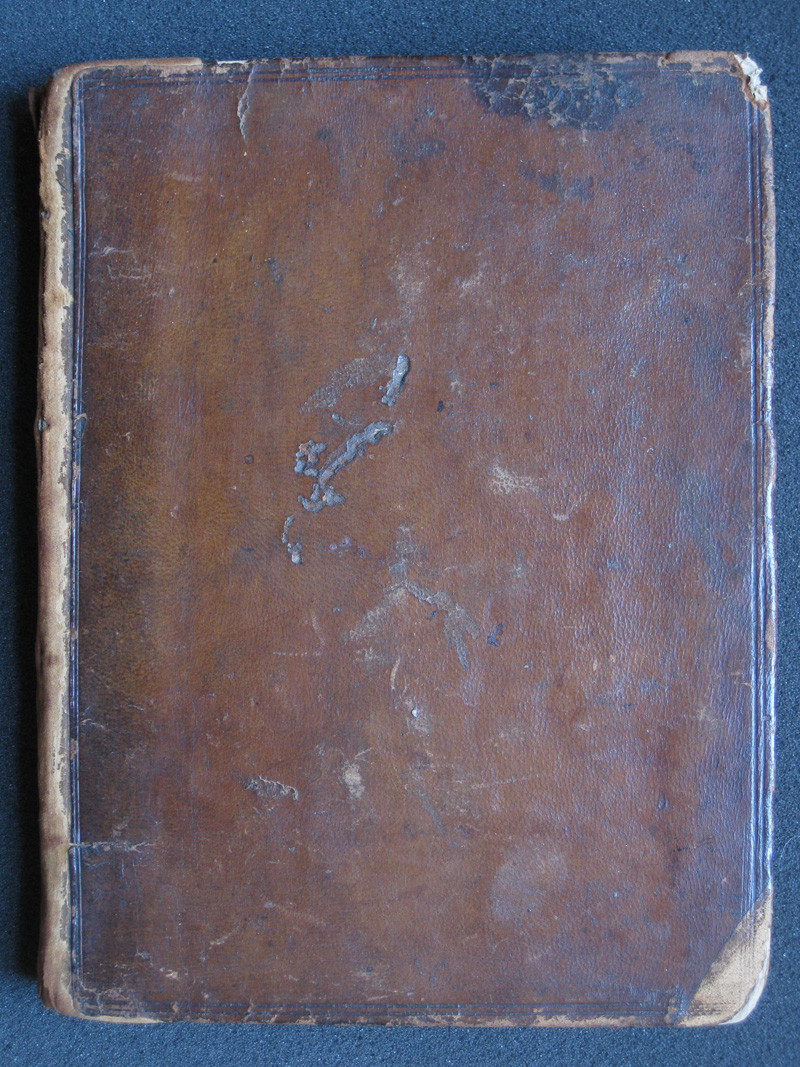Callis, Robert. The reading of that famous and learned gentleman, Robert Callis Esq; sergeant at law, upon the statute of 23 H.8. Cap. 5. of sewers: as it was delivered by him at Grays-Inn, in August, 1622. London: William Leak, 1647. Quarto. Wing C304.
Although he served in other positions, the barrister Robert Callis is probably best known (if he is known at all) as the commissioner of sewers for his home county of Lincolnshire. Shortly after becoming a bencher of Gray’s Inn in 1622, he delivered what became an influential reading of an older statute, 23 H. 8 c.5, which had established procedures governing the construction and maintenance of sewers throughout the country as well as the very position that he held (commissioner of sewers). From the Oxford Dictionary of National Biography entry on Callis:
Although particularly concerned with the commissioners of sewers, the tract [of Callis’s reading] had broader significance as a work of jurisprudence. Callis argued that, although the ‘bare words’ of the statute provided only for the maintenance of existing defences against the sea, the laws of the sewers were ‘of great and urgent necessity and use for the good of the whole Commonwealth of the Realm’ (Callis, Of Sewers, 71). Accordingly he argued that the statute should be constructed according to its equity, empowering commissioners to provide for new engines and defences against the sea. He also defended the status of the court of sewers as a court of record empowered to fine, imprison, and offer a variety of legal remedies.
It was first printed as a “tract” some twenty-five years later, in 1647. The address to the reader claims that its publication was occasioned by “the late Troubles [i.e. the Civil War],” which had devastated much of England’s infrastructure: “[I]t seemed to me to be of so Publique a Necessity, that I did conceive this Learned Piece upon the Laws of Sewers would come seasonably abroad, and finde an Entertainment suitable to the usefulness of it at this time” (sig. A2r). A second edition was published in 1685/6.
The present copy collates complete and remains in its original sheepskin binding. Leaves throughout are remarkably clean and bright, with only those at the very front and back showing some edge wear and staining. The corners and spine are worn, with the front hinge fragile and splitting somewhat at the head. Although the hinge would benefit from some light repairs, the fact that the book has remained unaltered—and, thus, untrimmed—has meant that what is arguably its most interesting feature remains intact: the tail edge of its text block, which has been inscribed in manuscript with “Callis on Sewers.” It is common with earlier books to see authors and titles written on fore edges, as books were once routinely shelved with the spine in and fore edge facing out, but what we see on this volume is much less typical and relatively late for this practice. That the inscription is on the tail edge most likely indicates that the book was laid on its bottom board with its tail facing out, presumably in a stack with others. Perhaps the shelves in this particular library weren’t tall enough to accommodate this fairly large quarto. Though, in the end, it is probably impossible to know exactly why it is labeled the way that it is, this book nevertheless provides evidence that owners handled and stored their books in a variety of ways, evidence that helps us paint a more nuanced picture of the world of early English print. SOLD


